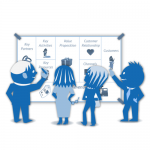How to make Estonia the richest nation on the globe
 This blog post is a transcript of a keynote presentation that I made at Proekspert’s 20-Year Anniversary Conference in Tallinn, Estonia on April 25, 2013. You can watch the presentation video below. The full text is added after the video.
This blog post is a transcript of a keynote presentation that I made at Proekspert’s 20-Year Anniversary Conference in Tallinn, Estonia on April 25, 2013. You can watch the presentation video below. The full text is added after the video.
The presentation explains how Estonia can become the richest nation in the world!
The DNA of modern software engineering is what holds the potential for making Estonia the richest nation in the world. I believe Estonia is better positioned than most countries to make it to the top of the global value chain. Their solid economy, their democratic foundation, the low power distance and their tradition for agile software engineering are huge assets.
This presentation explains how Estonia can become the richest nation in the world!
When you write a software program, does it always work first time around?
Does it always meet customer expectations the first time around?
Does it always scale well and perform unaffected by user and transaction load the first time around?
Of course it does not.
Software is buggy. It scales badly and it doesn’t meet customer requirements the first time, and maybe not even the second and third time.
Actually the trouble with software engineering made us invent agile methods – right? Waterfall approaches simply took us to too many disasters.
Software engineers know better than most that bringing a successful product to a customer is an iterative process where both the engineer and the customer are intimately engaged.
This DNA of modern software engineering is what holds the potential for making Estonia the richest nation in the world.
Comments to the title of the presentation
My presentation today carries the title: Software is eating the World – opportunities and challenges for Estonia
Eating the world….
It has a somewhat negative connotation.
Software based business models certainly disrupt a lot of industries. It changes the lives of many people for good and for worse. Just like the printing press, the steam machine, and the combustion engine did before the computer, the compiler and the Internet was invented.
Software is eating the world
The statement “software is eating the World” isn’t mine.
- Who said these words?
- Why did he say it?
- What are the opportunities?
- What are the challenges?
Marc Andreessen
The statement comes from Marc Andreessen. Who is he?
Marc was in the development team of the first Internet browser called Mosaic. Mosaic was developed at the National Center for Supercomputing Applications (NCSA) at the University of Illinois beginning late 1992. NCSA released the browser in 1993 – exactly 20 year ago!
What a coincidence! Proekspert was founded also 20 years ago.
Marc moved on and co-founded Netscape in 1994 in Mountain View California. By the mid 90’s Netscape had 90% of the market for Internet browsers. Marc and his co-founders did a successful IPO (introduced the company on the NY stock exchange).
Then Netscape caught the attention of Microsoft. Microsoft acquired a license from Mosaic and released the Internet Explorer in August 1995 bundled as a free utility with Windows 95 plus. This started the so-called browser war. Netscape lost.
Netscape evolved into Mozilla and was rewritten to become Firefox. AOL later acquired the assets of Netscape for $10B and is today using the brand for other purposes.
With an IPO behind him Marc was financially OK and moved on and started other companies, which he later sold to EDS and HP. In 2009 he announced the foundation of Andreessen and Horowitz, a Silicon Valley venture investment firm.
Why did he claim that software is eating the world?
Why did he say that software is eating the world?
Andreessen and Horowitz have investments in 125 software companies. They manage a $2,7B investment fund.
If you have that much at stake in software you better believe in the software industry.
With the Facebook IPO underway in 2011 airing a valuation of mind-blowing $100B cries of bubble started to pop up in the media. Were all these loss making software companies a repetition of the year 2000 bubble?
Andreessen and Horowitz just didn’t need a bubble at that point in time when they prepared for the Facebook IPO.
Andreessen and Horowitz have several investments in doubled sided business models, where the route to profit just hasn’t been identified yet. Thus they have a very vested interest in keeping up the hope in the market until they can file IPO’s and get out.
Marc also knows that even in good times, between 75% and 90% of his investments will fail. Between 75 and 90% will fail. Now with a high intrinsic failure rate and a bubble looming Marc decided it was time for a public statement.
Software is eating the world
“My own theory is that we are in the middle of a dramatic and broad technological and economic shift in which software companies are poised to take over large swathes of the economy.”
This is a key statement from the elaborate essay in the Wall Street Journal on August 20, 2011.
I think he is right. Let’s take a look at what has happened in the 13 years since the first bubble in year 2000.
The three level perspective
In my humble opinion software is eating the world on three levels.
Level 1 is representing the increase in software in products and services we are already very familiar with. Software is not only a part of the product itself, but also an increasing part of the services surrounding the products.
My new Samsung Smart TV is basically a computer with a High Definition screen allowing me to watch cable TV, access the Internet watching YouTube or Netflix or see videos stored on the hard disk in my basement. All enabled by software.
The Philips Hue light source, which is sold through Apple’s Stores, has an Internet address and can be remote controlled from my iPhone.
A friend of mine in the Netherlands is currently building a business around intelligent LED lighting. He is categorizing his business as a software business.
Cars are increasingly software controlled. Traffic management systems are mainly software driven.
More than 50% of the cost of developing the Joint Strike Fighter is related to software systems.
Level one represents established industries that are operating in typically red ocean type markets and use software to improve product value and reduce capital as well as operational expenses.
The demand for software engineering services will continue to increase from layer 1 enterprises.
These are the current customers of Proekseprt and most other software engineering companies.
Layer 2 represents entire industries that have been disrupted by software. This disruption is very bloody. Customers enjoy dramatically improved value at considerably lower prices. The companies disrupted are crippled and many cease to exist.
The disruptors are almost always outsiders.
The music industry was disrupted by the mp3 file format. Later on iTunes, Spotify, Pandora and other digital music distribution and service platforms picked it up. But the transition was a big mess, and it is not over yet.
Who were the main losers?
The record labels and the equipment manufacturers were the big losers.
The impact on the performing artists
But don’t think it is easy to be a performing artist either.
Oppa Gangnam Style
Out of curiosity I did a little research into the business of Oppa Gangnam Style.
Psy made $870K on YouTube ad sharing revenue, $2.4M on downloads through iTunes, $4,6M on endorsements (Samsung) and $80K on streaming (Internet radio).
Total estimated revenue= $8M.
Other industries
Who disrupted the still picture and home made video industry? The jpeg and mpeg file formats did.
Viewing pictures and home made videos have been spread over a lot of software platforms.
Who is disrupting the Telcos?
Well they are primarily killing each other in a red ocean type market while Skype is eating their lunch from a blue ocean position.
Let’s spend a few minutes on Skype, which is close to Estonian hearts I assume.
Skype was founded in 2003 by Janus Friis from Denmark and Niklas Zennström from Sweden. The software was developed in Estonia by Ahti Heinla, Priit Kasesalu, and Jaan Tallinn. These guys already knew each other from the Kazaa project.
In 2005 Skype, then incorporated in Luxemburg, was acquired by eBay for $2,5B.
In 2009 eBay sold 65% of Skype to a group of investors including Andreessen and Horowitz at a $2,75B valuation. So eBay apparently was not a good home for Skype.
In May 2011 Microsoft acquired Skype for a whopping $8,5B. It seems that Andreessen, Horowitz and company did a better job than eBay.
By the end of 2012 Skype’s share of the international call market was- are you ready? 34%. They are by far the largest international call carrier in the world. And they are not a Telco. Skype is a software company.
Level 3
And now the fun really starts.
These are all businesses providing a service we didn’t know of 10-15 years ago. I won’t go though them all.
You are all familiar with the brands on the left. They are generic consumers brands based on double-sided business models. Double-sided business models are mainly getting revenue from advertisements. They sell us to the advertisers.
As we move to the right the brands become less known and represents niche solutions in freemium or paid for formats. Some of them are B2C, some are B2B.
While the brands on the left all originate in the US, the brands on the right come from all over the world. Angry birds are from Finland, Wordfeud comes from Norway, Secunia is Danish, XERO is from New Zealand, 37Signals is from Chicago, Flightradar24 is from Sweden and OnSong is from Harrisburg, Pennsylvania.
This brings me to the opportunities offered by software based business models today.
Opportunities
I have divided these opportunities into 4 areas:
Cost of Entry is low and keeps falling
Starting a software-based business requires very little cash. Most software-based businesses can be started without external funding.
I am not claiming that they can scale fast without funding, but proof of concept requires only little cash. If you don’t plan on beating Facebook, Google, LinkedIn, Twitter and their likes you can get something off the ground fast and with very little money.
You can even use the channels provided by the app stores to get the product to the market – if your product fits this format.
I am not claiming that starting a new software-based business is easy. I am only saying that it doesn’t necessarily require a lot of time and cash.
Starting a software-based business in Estonia is probably even less expensive than starting it in the US, UK, France or Scandinavia.
Market Reach
There are currently 1 billion broadband subscribers worldwide. 300 million are fixed line based and 700 million mobile based.
The access to the 1 billion subscribers is equal for anyone anywhere in the network. There are no major advantages of being in a certain location when it comes to market reach though the Internet.
If you need a big market with a single language, 1,5 billion people are prepared to consume and do business with you in English. That should be enough to get anybody started.
Location – does it matter anymore?
Not as much as it used to and the location for software-driven business opportunities keep losing its relevance. There are still some eco-system issues that I will get back to at the end of my presentation.
But location becomes increasingly irrelevant.
Innovation Concepts
This is probably the most important development we have seen since the birth of the computer, the compiler and the Internet.
The most profound and not fully exploited sources for making a software-based business successful are the new innovation concepts provided over the last 5 years.
It is not reserved exclusively for software-driven businesses, but due to the nature of software (no manufacturing, no materials, no logistics) we can take full advantage of these methods.
Especially the work done by Eric Ries (Lean Startup), Steve Blank (The Startup Owners Manual) and Alexander Osterwalder (Business Model Generation) holds tremendous potential for software-based innovation. The time doesn’t allow me go into details, but these approaches have three major attributes:
- They are all well documented and can be freely used. The authors claim no royalties for using the methods. That’s great news for innovation on a tight budget.
- They are all based on getting to customers fast. Less ivory tower thinking and more doing.
- They are all designed to make business initiatives fail fast
Failing fast is probably the most important feature of the new innovation approaches. Recognizing a failure fast allows you to pivot and try several alternative routes before you run out of cash and have to take a job (at least for a while).
These innovation concepts are not bound by location and can be used all over the globe.
Actually Steve Blank was in China just recently teaching Chinese entrepreneurs how to apply these approaches.
Do you see the similarity between these principles and agile software engineering?
Now we back to my questions at the beginning of my presentation.
The agile methods we have applied in software engineering for years are finally making their way into business development.
Gone are the waterfall approaches with 120 page business plans. Business Model Innovation is to business development what agile engineering was to software development.
I will claim that software engineers are better positioned to embrace the new business innovation approaches than most MBA’s on this globe.
Midway wrap up
Now let’s wrap up before I reach the final stretch of my presentation
I have concluded that there is a growing market for software in all industries.
I have concluded that there are tons of opportunities in building software-based business models and that these business models can be initiated all over the world at very little cost.
When it comes to software based business models delivered over the Internet, big countries enjoy no comparative advantage over small countries such as Estonia.
I have concluded that Estonia with its agile software engineering tradition holds potential for moving into agile business development in a big way.
What nations want/need
When we talk about opportunities for Nations like Estonia – or Denmark for that sake – we have a different perspective.
Nations typically represented by their governments are driven by other incentives than businesses.
All nations want full employment for their people, a positive balance on the trade with the rest of the world (USA is the only exception here) and a solid and growing tax base. All good things a nation can provide its citizen are based on these three elements. A healthy business environment provides the foundation for these elements.
What nations need to keep improving the wealth and welfare of their populations is:
- A well-paid population, especially a rich middle class,
- Innovation to drive productivity, growth and global competitiveness, and
- A Lean government to provide services in a transparent format.
All these factors reinforce each other. They provide the community eco-system.
The Estonian Situation
So where is Estonia today?
- Area: #133 (252)
- Labor Force: #153 (232)
- GDP: #113 (229)
- Investments: #58 (152) – Denmark #124
- GDP Growth: #135 (217) – Denmark is #191
- GDP/Capita: #60 (228)
- Unemployment: #125 (201)
- Equality: #108 (136)*
- Budget Surplus/GDP: #82 (213)
- Public Debt/GDP: #143 (152)*
*) Means that a high number is better
The Estonia ambition must be:
- #1 on Unemployment
- #1 on GDP/Capita
- Among the top ten on equality
To get there more investments are required. The level of investments in Estonia are already fairly high. Much higher than in Denmark. But even more must be done.
I don’t think it is more money which is needed.
The Challenge
To increase the growth and the value created in Estonia, Estonians must move up in the innovation value chain.
Instead of being a Key Partner in other countries’ business models, Estonians must move to innovate their own business models. They must increase the level of ambitions, leadership and intra- and entrepreneurship. They must use their agile software engineering DNA to master the new innovation approaches and become black belts in demand generation. They must become better sales people and marketers.
Owned by Estonians
Estonia is a small nation.
In my opinion the country must therefore operate a very open innovation eco-system.
Attracting ambition, talent, service providers and funding from the rest of the world will help stimulate growth in Estonia and take advantage of the excellent engineering skills in the country as well as stimulate the current eco-system.
The best way to stimulate this is providing excellent framework conditions for business in general. Continue to make it easy to start and stop businesses, maintaining a flexible labour market, making stock options for co-founders and staff uncomplicated. Continue improving the educational system, with focus on STEM (Science, Technology, Engineering and Mathematics) combined with business fundamentals and agile business innovation principles in all areas of the educational system.
The government must resist the temptation to subsidize individual businesses, whether with their own funds or with funds provided by the EU. This temptation is very difficult to resist, but it will pay off in the long run. Governments cannot predict the future nor can they pick the winners. Leave the business to business and don’t mess with the market.
Any tax-financed support for business should be allocated to improve framework conditions for all businesses including improvement of the infrastructure and the educational system.
Government can stimulate the eco-system by proving platforms for having eco-systems players get together locally and/or with players from eco-systems from other parts of the world.
If you need inspiration, you can invite Brad Feld, from Boulder, Colorado, US, who is a specialist in building entrepreneurial ecosystems.
Encourage young Estonians to go abroad, learn languages and build personal international networks. Give them all good reasons for coming back, start businesses or become key staff members in Estonian companies.
What I am telling you today is not specific to Estonia. I would say the same to any small nation in the world. But I believe you are better positioned than most. Your solid economy, your democratic foundation, the low power distance and your tradition for agile software engineering are huge assets.
As individuals we want to climb as high as we can on the value chain to better provide for our families and ourselves. As businesses we will protect and expand our positions in fair competition on the markets. We want to grow to provide better opportunities for our employees, our shareholders, our communities and ourselves. As nations we also want to climb to the global value chain. We want to get to the top providing for ourselves, for our fellow citizens and for the rest of the world.
These ambitions, the innovation it fosters combined with high ethical standards and a democratic mind-set makes the world our playground where we can grow as individuals and as communities.
I am convinced that our efforts will make the world a better place for everyone, and by the end of the day that may be what this is all about.
The End
Thank you for listening and have a great day.








